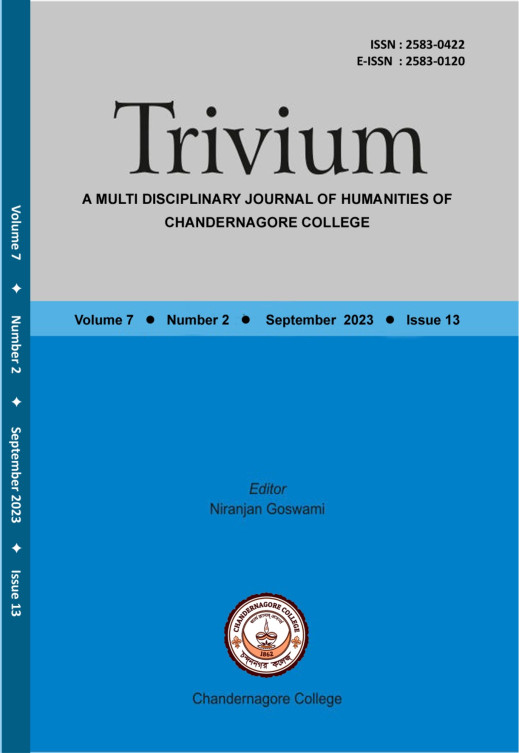Trivium : Vol - 7 : No - 2 : Issue - 13
The present issue maintains the tradition of diversity of Trivium as a bunch of essays are on offer having a wide range of subjects. Whereas one paper is on the popular topic of the graphic novel, two others are on mainstream English writers. The fourth offers surprise by being centred on Indian art history. The last Bengali essay is on the philosophy of yoga of Aurobindo.
Aishani Das provides a feminist perspective on two graphic novels of the French-Iranian author Marjane Satrapi, Persepolis and Embroideries. The author has shown how in these autobiographical graphic novels Satrapi has taken up the question of sexual liberation of her female protagonist in one and her power relations with a man in the other. .
Anmana Bhattacharya in her essay explores how the good and evil traits of a split personality and the concomitant psychological complexities have been rendered by Robert Louis Stevenson and Oscar Wilde in Doctor Jekyll and Mr. Hyde and The Picture of Dorian Gray respectively.
Manisha Bhattacharya picks up another popular English author, Agatha Christie to provide a new reading of The Murder of Roger Ackroyd, focusing on the strategic use of gossip as a female surveillance tool as represented in the actions of the character Caroline Sheppard. She not only beats the male concept of control of her brother Dr. James Sheppard but is able to possess more information than him through gossip. .
Jitamanyu Das’s essay offers variety by focusing on the contributions of a non-Anglophone author’s views on Indian art. He makes an important suggestion that the Italian art historian Mario Bussagli freed conversations on Indian art from the dominance of Anglophone writers and Western subjugation so that it was possible to look at Indian art with fresh eyes and emphasize the connectedness of history. .
Srikanta Hazra in his Bengali essay points out the particular philosophical ideas of Aurobindo, the harmony of the soul with soul and the comparative concepts of the paramatma and the jivatma. Hazra emphasizes the fact that Aurobindo’s ideas ultimately evolved into a human philosophy. .
Aishani Das provides a feminist perspective on two graphic novels of the French-Iranian author Marjane Satrapi, Persepolis and Embroideries. The author has shown how in these autobiographical graphic novels Satrapi has taken up the question of sexual liberation of her female protagonist in one and her power relations with a man in the other. .
Anmana Bhattacharya in her essay explores how the good and evil traits of a split personality and the concomitant psychological complexities have been rendered by Robert Louis Stevenson and Oscar Wilde in Doctor Jekyll and Mr. Hyde and The Picture of Dorian Gray respectively.
Manisha Bhattacharya picks up another popular English author, Agatha Christie to provide a new reading of The Murder of Roger Ackroyd, focusing on the strategic use of gossip as a female surveillance tool as represented in the actions of the character Caroline Sheppard. She not only beats the male concept of control of her brother Dr. James Sheppard but is able to possess more information than him through gossip. .
Jitamanyu Das’s essay offers variety by focusing on the contributions of a non-Anglophone author’s views on Indian art. He makes an important suggestion that the Italian art historian Mario Bussagli freed conversations on Indian art from the dominance of Anglophone writers and Western subjugation so that it was possible to look at Indian art with fresh eyes and emphasize the connectedness of history. .
Srikanta Hazra in his Bengali essay points out the particular philosophical ideas of Aurobindo, the harmony of the soul with soul and the comparative concepts of the paramatma and the jivatma. Hazra emphasizes the fact that Aurobindo’s ideas ultimately evolved into a human philosophy. .
Readers can find front matter and back matters of the issue by clicking respective buttons:







